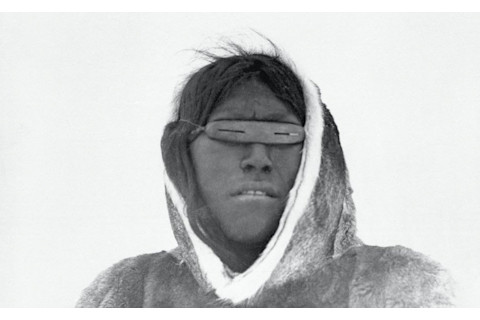We owe a lot to the sun. Without it, we’d have no heat or light, of course. We’d also have no photosynthesis, and thus no oxygen, without which, neither we nor Earth’s ozone layer would exist. And yet, as a giant nuclear reactor, the sun insists on bombarding us with energy that, left unchecked, could burn all of us to a crisp. And the ozone layer has never been a foolproof filter when it comes to screening out harmful ultraviolet (UV) rays.
Even in ancient times, before humans could generate enough ozone-depleting substances to erode that protective barrier, the ozone layer still let enough solar radiation through that our ancestors had to deal with sunburn and other sun-related damage — just as we do today.
In modern times, of course, we’ve developed preventive measures — apparel and accessories designed specifically to minimize UV exposure, as well as topical sunscreen and sunblock to filter or reflect those harmful rays. Such advances offer major benefits when it comes to shielding our skin from damage and minimizing our risk of skin cancer.
But how did we protect ourselves back in antiquity, before we fully understood the radiation that causes sun damage? As it turns out, people in ancient times devised some surprisingly effective ways to ward off sunburn — and more than a few of them are still in use today.
1. Sun-Shielding Clothes and Hats

(Credit: Dmytro Buianskyi/Shutterstock)
Dmytro Buianskyi/Shutterstock
While the historical record is somewhat lacking in documentation, it’s reasonable to assume that early humans figured out that protecting their skin and scalp with some kind of covering — clothing, rudimentary hats, or headgear — kept them cooler and less likely to burn in direct sunlight.
After all, humans have been weaving textiles for as much as 28,000 years, possibly longer. (A famous figurine, nicknamed the Venus of Willendorf, dates to 30,000 years ago and depicts a woman wearing what may be a woven hat. Admittedly, there’s no evidence to suggest that it was designed or worn with a sun-blocking purpose in mind. But it couldn’t have hurt.)
Over the millennia, different societies developed light-colored and lightweight cloth that would prove useful for protecting oneself against harmful sun exposure. We know that the ancient Egyptians, Greeks, and other civilizations — especially those living in hot, sunny climes — adapted to their environments by dressing themselves in long and loose-fitting garments that offered greater coverage of the body without overheating the wearer.
Wide-brimmed hats, woven from reeds, straw, or made from other materials, were also used by some of these civilizations to protect the scalp, face, eyes, and shoulders, keeping both sunburn and sunstroke at bay. Traditional headgear such as turbans (depicted in sculptures as far back as 2300 B.C.E.) and keffiyehs (dating to the 7th century C.E., although were possibly used earlier) had both cultural as well as practical importance since such garments also shielded the head and upper body from excessive sunlight.
Read More: The Origin of the 30,000-Year-Old Venus of Willendorf
2. Parasol Protection

(Credit: Sergio TB/Shutterstock)
Sergio TB/Shutterstock
Meanwhile, sun-protective accessories began to emerge, especially in the form of umbrellas or parasols.
You wouldn’t think that a humble bumbershoot would be the source of scholarly debate, but there are conflicting theories about when and where umbrellas originated. A popular legend suggests that China developed the umbrella more than 3,000 years ago, with early versions being devised from the leaves of plants, and later, more sophisticated models being constructed from silk or paper on a flexible framework.
Other sources insist that ancient Egypt was the umbrella’s place of origin, with examples appearing in Egyptian art dating to 2450 B.C.E., and made from palm leaves attached to a wooden stick. If true, those proto-parasols could have served as both a fan and sun shield for that culture’s elite.
Read More: What Was the Silk Road and What Happened to It?
3. Shades and Shields

(Credit: Rudolph Martin Anderson, 1916/CC BY-SA 4.0/Wikimedia Commons)
Rudolph Martin Anderson, 1916/CC BY-SA 4.0/Wikimedia Commons
Although shaded eyeglasses made from smoky quartz are said to date back to 12th-century China, sun-protective eyewear may have first emerged among the Indigenous people of the Arctic, such as the ancestors of the Inuit or Yupik tribes.
At least 2,000 years ago — and possibly much earlier — these people are known to have developed slitted face coverings that protected the eyes from glare and solar exposure, enabling better visual acuity (while also unknowingly guarding against cataracts and similar ocular damage from the sun). Surviving examples of these goggles are variously made from bone, wood, and animal sinew and were highly effective at shielding delicate corneas from sunburn and glare.
In modern times, renowned German lens maker Zeiss first began marketing high-end tinted glasses in 1924, with sun protection clearly in mind. Entrepreneur Sam Foster and partner Bill Grant, who got their start making hair accessories for women, also developed non-prescription sunglasses — launching the affordable Foster Grant line of eyewear — available for purchase beginning in 1929.
Read More: Who Invented the Shoe? Scientists Say Footwear May Be More Than 40,000 Years Old
4. Legendary Lotions

(Credit: twabian/Shutterstock)
twabian/Shutterstock
By the late 1800s, scientists began to understand that UV radiation from the sun had a harmful effect on human skin. Filters were discovered to block those damaging rays, and eventually, we developed the first commercial sunscreens in the 1920s and ‘30s. Nevertheless, our ancestors had some inkling that different substances, when applied as ointments, unguents, or pastes, could protect or heal skin from a range of injuries, including sun damage.
Perhaps the oldest sunscreen involves the pigment known as ochre. Humans have been using ochre in one way or another for about 300,000 years. It was deployed for coloring in textiles, pottery, and other early human crafts. But it has also played a role in the decoration of our skin.
While researchers have identified many of the cultural underpinnings of such skin applications, it’s also worth noting that ochre pigment has been shown to provide protection against solar radiation. This has led more than a few scientists to theorize that humans could have used ochre as one of the earliest forms of sun protection.
In other cultures, we know now that ancient peoples experimented with different topical applications for sun protection (or the soothing of sunburn symptoms). Currently, the earliest recorded sunscreen is attributed to the Egyptians, who were known to use rice bran, oil from the aromatic plant jasmine, and lupine to prevent excessive darkening of the skin — and it was effective.
Ancient Greeks are said to have employed olive oil as a protective layer against sunburn (although modern chefs would likely argue that this would have the opposite effect, perhaps serving only to sauté our ancestors).
That said, the Greeks, as well as early Indian and Roman civilizations, were aware of the uses of zinc oxide. As far back as 500 B.C.E., and likely much earlier, the compound was identified as being beneficial in various applications, ranging from cosmetics to cancer treatment. For centuries, zinc oxide was also known to aid in the protection of skin and the hastening of wound healing.
Although speculative, it’s not hard to imagine that early civilizations saw its benefit against skin damage from the sun. And they would have been right: Modern research has confirmed that zinc oxide is a champ at blocking both long- and short-wave UV radiation.
Today, zinc oxide is still used as a component in many sun-protection products. Beneficial as it is, it may cause a skin reaction in those who are sensitive to it, and it does not blend in with most natural skin tones. And yet, as sun protection goes, zinc oxide is still one of the most effective.
This just goes to show you that, even if they didn’t fully understand the causes, when it came to preventing sun damage, our ancestors had some pretty bright ideas.
Read More: How the Chemicals in Sunscreen Protect Our Skin
Article Sources
Our writers at Discovermagazine.com use peer-reviewed studies and high quality sources for our articles, and our editors review for scientific accuracy and editorial standards. Review the sources used below for this article:
American Academy of Ophthalmology: Summertime Sunglasses.
Britannica.com: Arts & Culture: Keffiyeh.
The China Project: Lu Ban: China’s Inventor of Everything.
EPA: What is Ozone?
JAMA Dermatology: December 2015: The History of Sunscreen.
Metropolitan Museum of Modern Art: Ancient Greek Dress.
Nature: Scientific Reports: The Microstructure and Origin of the Venus from Willendorf.
National Eye Institute: New Research Sheds Light on How UV Rays May Contribute to Cataract.
National Library of Medicine: Baylor University Medical Center Proceedings, Sept. 1, 2021: “Sunscreen: A Brief Walk Through History.”
National Library of Medicine: Nanotechnology Science and Applications, Oct. 13, 2011: “Titanium Dioxide and Zinc Dioxide Nanoparticles in Sunscreen: Focus on Their Safety and Effectiveness.”
PLOS ONE, Sept. 9, 2015: “Evaluating the Photoprotective Effects of Ochre on Human Skin by In Vivo SPF Assessment.”
Royal Museums Greenwich: Snow Goggles, Inuit Type.
Source: Notes in the History of Art: Vol. 18, No. 2, Winter 1999: “Parasols in the Ancient Near East.”
University of Cambridge Dept. of Archaeology: The Origins of Weaving Project.















